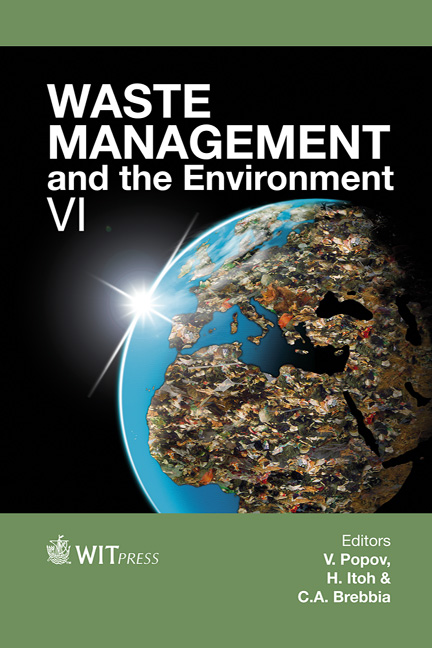Effect Of Microbial Activity On Dimethyl Sulfoxide Degradation In An Air-lift Bioreactor
Price
Free (open access)
Transaction
Volume
163
Pages
11
Page Range
403 - 413
Published
2012
Size
401 kb
Paper DOI
10.2495/WM120361
Copyright
WIT Press
Author(s)
S.-C. J. Hwang, Y.-H. Lin, Y.-C. Chang & S.-Y. He
Abstract
Acclimatized dimethyl sulfoxide-degrading sludge can possess the ability to convert DMSO to odourless compounds specifically by repeated batches in an air-lift bioreactor. Moreover, DMSO usually causes a low microbial biomass growth, unstable operation and malodorous compounds emission in biological treatment because of its characteristic for activated sludge. A main focus of DMSO degrading performance is conducted by original sludge without longterm acclimation using an airlift bioreactor in this study. The result indicates various organisms of sludge poisoned by DMSO still secrete inducible oxidoreductase to improve volatile organic sulphur compounds degradation using DMSO as a substrate in an air-lift bioreactor. Using this method, the oxidoreductase in the supernatant of working medium is able to remove DMSO concentration from 50 up to 1000 mg L-1 completely by fed batch mode due to LB medium cultures and enhances the microbial activity of activated sludge. An optimal alternative performance was developed; the rate of DMSO biodegradation can accomplish 34.72 mg-DMSO h-1g-1-dry sludge weight. The best result showed that 500 mg L-1 of DMSO could be completely removed with 120 h under repeated mode. Control of microbial activity in high loading of DMSO and carbon content in wastewater were important factors for biodegradation of DMSO. Keywords: DMSO, VOCs, activated sludge, biodegradation, airlift bioreactor.
Keywords
DMSO, VOCs, activated sludge, biodegradation, airlift bioreactor.





